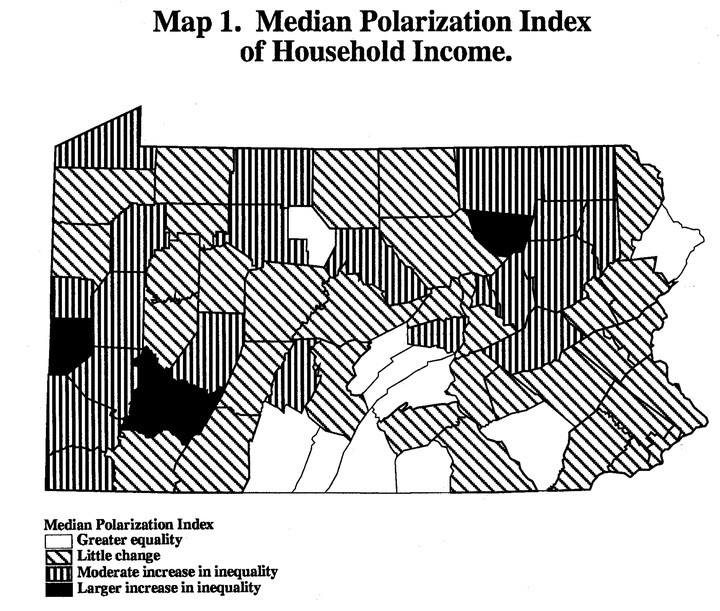
Abstract
Why Should We Care about Income Inequality? Increasing income inequality, particularly the increasing gap between those at the top and those at the bottom of the income distribution, tends to play out at both the national and local levels. Inequality can be a prime barrier to having a broad representation of community members working together toward common goals for the betterment of all residents and the economic and social development of the community. Ultimately, the increasing inequality in America belies the goals of a nation built upon equal opportunity. The disadvantages and lack of resources experienced during childhood and young adulthood by those in families with low incomes are extremely difficult to overcome, and limit the opportunities that are available.
In this paper we measure the polarization of income within the counties of Pennsylvania using a polarization index based on relative distribution methods.
Overall, there is evidence that income inequality has increased in the majority of Pennsylvania’s counties, but much of it is driven by shifts of households from the middle of the income distribution (above the median) towards the top, rather than by a gutting of the middle through movements of households toward the top and the bottom. This pattern of increasing inequality has different implications than does a shift of households from the middle toward each end. While inequality is increasing, these patterns suggest that the households with the most income are increasing the gap between themselves and everyone else.